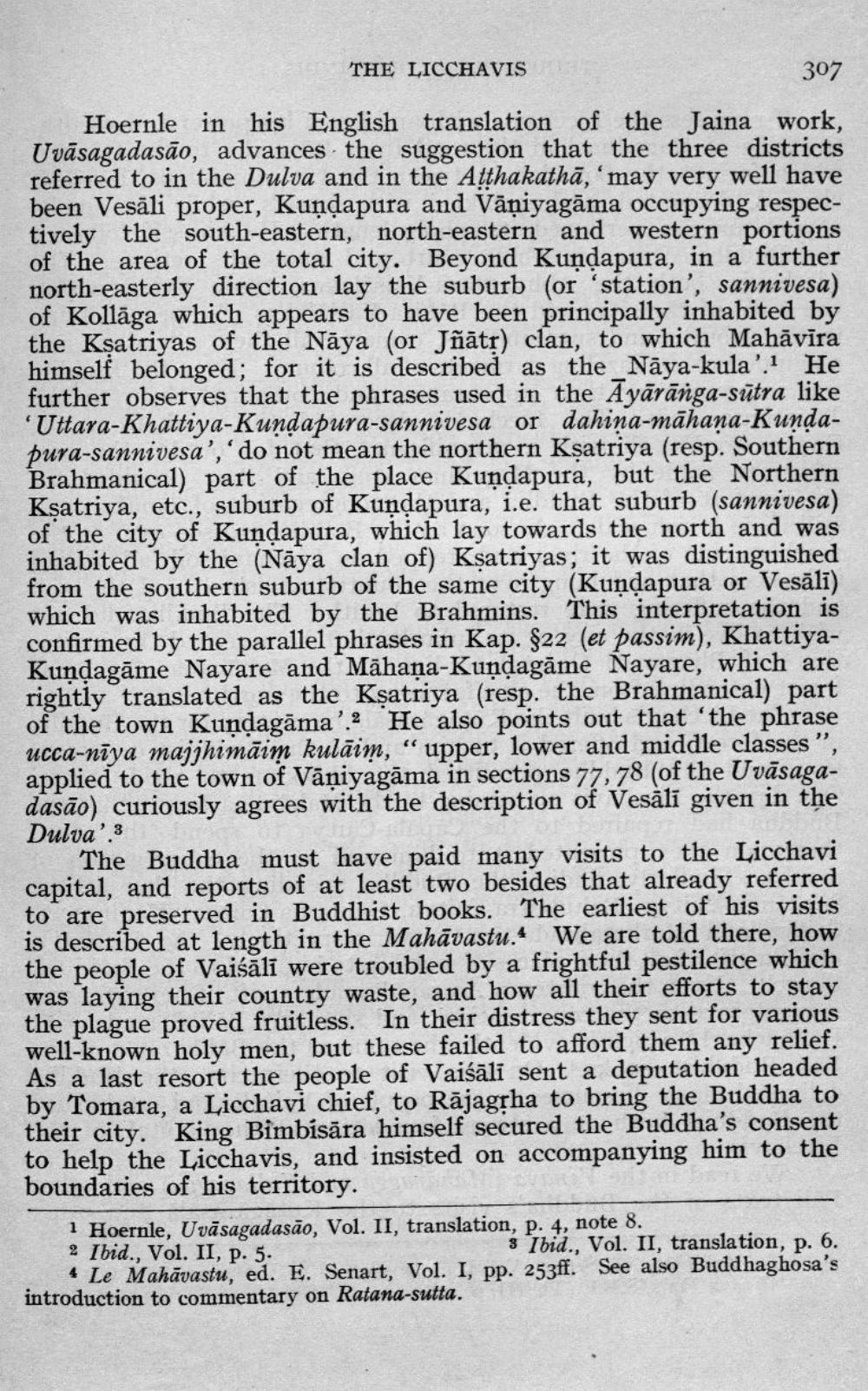________________
THE LICCHAVIS
307 Hoernle in his English translation of the Jaina work, Uvāsagadasão, advances the suggestion that the three districts referred to in the Dulva and in the Atthakathā, 'may very well have been Vesāli proper, Kundapura and Vāņiyagāma occupying respectively the south-eastern, north-eastern and western portions of the area of the total city. Beyond Kundapura, in a further north-easterly direction lay the suburb (or 'station', sannivesa) of Kollāga which appears to have been principally inhabited by the Ksatriyas of the Nāya (or Jñātr) clan, to which Mahāvīra himself belonged; for it is described as the_Nāya-kula'.1 He further observes that the phrases used in the Ayārānga-sūtra like 'Uttara-Khattiya-Kundapura-sannivesa or dahina-māhana-Kundapura-sannivesa', 'do not mean the northern Ksatriya (resp. Southern Brahmanical) part of the place Kundapura, but the Northern Ksatriya, etc., suburb of Kundapura, i.e. that suburb (sannivesa) of the city of Kundapura, which lay towards the north and was inhabited by the (Nāya clan of) Ksatriyas; it was distinguished from the southern Suburb of the same city (Kundapura or Vesālī) which was inhabited by the Brahmins. This interpretation is confirmed by the parallel phrases in Kap. $22 (et passim), KhattiyaKundagāme Nayare and Māhaņa-Kundagāme Nayare, which are rightly translated as the Ksatriya (resp. the Brahmanical) part of the town Kundagāma'.2 He also points out that 'the phrase ucca-nīya majjhimāim kulāim, “upper, lower and middle classes”, applied to the town of Vāņiyagāma in sections 77, 78 (of the Uvāsagadasão) curiously agrees with the description of Vesālī given in the Dulva'.:
The Buddha must have paid many visits to the Licchavi capital, and reports of at least two besides that already referred to are preserved in Buddhist books. The earliest of his visits is described at length in the Mahāvastu. We are told there, how the people of Vaiśālī were troubled by a frightful pestilence which was laying their country waste, and how all their efforts to stay the plague proved fruitless. In their distress they sent for various well-known holy men, but these failed to afford them any relief. As a last resort the people of Vaiśāli sent a deputation headed by Tomara, a Licchavi chief, to Rājagtha to bring the Buddha to their city. King Bimbisāra himself secured the Buddha's consent to help the Licchavis, and insisted on accompanying him to the boundaries of his territory.
1 Hoernle, Uvāsagadasão, Vol. II, translation, p. 4, note 8. 2 Ibid., Vol. II, p. 5..
3 Ibid., Vol. II, translation, p. 6. * Le Mahāvastu, ed. E. Senart, Vol. I, pp. 253ff. See also Buddhaghosa's introduction to commentary on Ratana-sutta.




